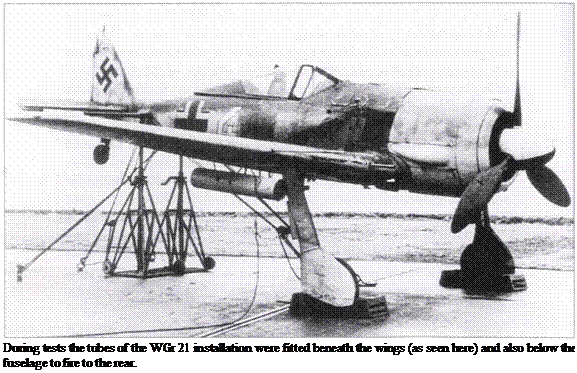Werfergranate 21
This rocket was based on the 21-cm mortar bomb and development began in May 1944. The projectile was stabilised in flight by a so-called Messer-Spreitz tail unit in which the previous numerous apertures for stabilizing the spin were replaced by a large central jet. Burn time for the solid-fuel, 95-kg (209-lb) rocket was only 1.3 seconds. This gave the projectile a speed of 590 m/sec (1,935 ft/sec). The first explosive heads for the weapon were tested in the autumn of 1944 and the process concluded officially on 29 January 1945.

The first thousand of a series run with a 130 BS shrapnel head were completed at the end of February 1945. A larger explosive charge was developed but this needed to be finished by hand and never reached the testing range. Two firing tubes slung below the forward fuselage of an Me 262 each holding a 21-cm calibre mortar bomb were purely a makeshift measure to disperse a bomber formation and so allow the fighters a better opportunity to attack. They were probably WGr 21 mortars similar to those carried by the Bf 109 and Bf 110. A number of Me 262 A-las at Gruppenstab III./JG 7 were
equipped with them in the spring of 1945.The tactical results did not produce the expected success, and use of the rocket was quickly discontinued.










